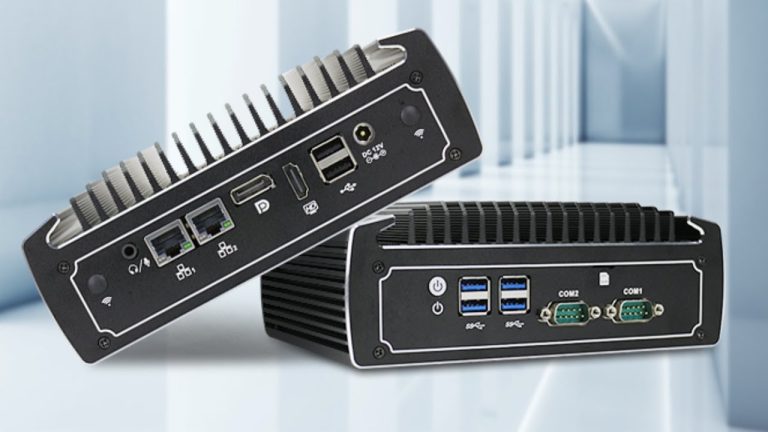If you’re running a small or medium-sized business, you might not think you’re a target for cybercriminals—but you’d be wrong. In fact, SMEs are often the perfect targets because they typically don’t have the same level of security as larger companies. From phishing scams to ransomware attacks, the threats are real. But don’t panic! With the right security solutions, you can protect your data, keep your business running smoothly, and avoid costly mistakes. Let’s break down the smart network security tools and tips that can help you stay safe without breaking the bank.
Understand the Cybersecurity for SMEs
SMEs often face resource constraints, making them appealing targets for cybercriminals. Common threats include phishing attacks, ransomware, and data breaches. The National Cyber Security Centre (NCSC) reports that SMEs have a significant likelihood of experiencing cyber incidents, which can result in substantial financial and reputational damage.
Essential Network Security Components
To effectively safeguard their networks, SMEs should consider implementing the following security components:
- Endpoint Detection and Response solutions monitor and analyze endpoint activities to detect and respond to threats. They provide detailed information about devices connected to the network and can prevent unauthorized access.
- Next-Generation Firewalls (NGFWs) offer advanced filtering capabilities, such as inspecting data packets to identify and block malicious content. They can also establish secure connections through Virtual Private Networks (VPNs).
- Intrusion Detection and Prevention Systems (IDS/IPS) monitor network traffic for suspicious activities and can take action to prevent potential threats. They provide an additional layer of defense by analyzing data packet contents.
- Protects against email-based threats such as phishing and malware by filtering incoming and outgoing emails to reduce the risk of malicious content reaching users.
- Domain Name System (DNS) Protection prevents access to malicious websites by filtering DNS requests, thereby blocking harmful content before it reaches the network.
Managed Security Services
Given the complexity of cybersecurity, many SMEs opt for Managed Security Service Providers (MSSPs) to handle their security needs. MSSPs offer services such as continuous monitoring, threat detection, and incident response, allowing SMEs to focus on core business activities. This approach provides access to expertise and resources that may be otherwise unattainable.
Unified Security Platforms
Consolidating various security tools into a unified platform simplifies management and enhances protection. Such platforms provide centralized control, better visibility, and seamless integration of security measures, making them suitable for SMEs with limited IT resources.
Employee Training and Awareness
Human error is a significant factor in security breaches. Regular training programs can educate employees about best practices, such as recognizing phishing attempts and following secure protocols, thereby strengthening the overall security posture.
Regular Security Assessments and Compliance
Conducting periodic security assessments helps identify vulnerabilities and ensures compliance with relevant regulations. This proactive approach enables SMEs to address potential issues before they can be exploited.
Cost-Effective Security Solutions
Budget constraints are a common challenge for SMEs. Utilizing cost-effective solutions like cloud-based security services and open-source tools can provide adequate protection without significant financial investment. Additionally, some vendors offer tailored packages for SMEs, combining essential security features at affordable rates.
Data Encryption
Encrypting sensitive data ensures that even if a breach occurs, the information remains inaccessible to unauthorized parties. Implementing encryption protocols for data at rest and in transit is a critical component of a comprehensive security strategy.
Incident Response Planning
Developing and maintaining an incident response plan enables SMEs to react swiftly and effectively to security incidents, minimizing potential damage. This plan should outline procedures for identifying, containing, eradicating, and recovering from security breaches.
Leverage Advanced Technologies
Emerging technologies such as Artificial Intelligence (AI) and Machine Learning (ML) can enhance threat detection and response capabilities. By analyzing patterns and anomalies, these technologies assist in identifying potential threats in real time.
Conclusion
Cybersecurity might sound intimidating, but it doesn’t have to be a headache. With a few smart security tools and a bit of planning, your business can stay safe from the most common online threats. Whether it’s using a firewall, training your employees, or exploring affordable managed services, there are plenty of ways to boost your defense. In the end, investing in good security is just smart business—it keeps your data safe, builds trust with your customers, and ensures your company is ready for whatever comes next.
FAQs
Why are SMEs frequent targets for cyberattacks?
SMEs often have limited budgets and resources to dedicate to cybersecurity, making them attractive targets for cybercriminals. Attackers assume these businesses have weaker defenses compared to larger enterprises, making it easier to exploit vulnerabilities.
What is the most cost-effective way for SMEs to improve cybersecurity?
Investing in a multi-layered approach with basic yet essential tools like firewalls, endpoint protection, and email security can provide strong defense at a reasonable cost. Partnering with Managed Security Service Providers (MSSPs) can also offer expertise without the need for an in-house security team.
How does employee training reduce cyber risks?
Employees are often the first line of defense against cyber threats. Training them to recognize phishing emails, avoid unsafe websites, and use secure passwords can prevent many attacks. Awareness programs significantly reduce the likelihood of human error leading to security breaches.
What are the risks of not using encryption?
Without encryption, sensitive data like customer information, financial details, and intellectual property is exposed. If this data is intercepted during transmission or stolen during a breach, attackers can access it easily, leading to financial and reputational harm.
How do intrusion detection and prevention systems (IDS/IPS) benefit SMEs?
IDS/IPS systems continuously monitor network traffic for suspicious activities. They identify and block unauthorized attempts to access the network, reducing the chances of successful attacks. These tools are especially useful for SMEs that handle sensitive customer or business data.
Are cloud-based security solutions reliable for SMEs?
Yes, cloud-based security solutions offer scalability, cost-effectiveness, and regular updates to address emerging threats. Many providers offer robust encryption, monitoring, and incident response features, making them a viable option for SMEs with limited resources.
How often should SMEs conduct security assessments?
SMEs should perform security assessments at least annually or whenever significant changes are made to the IT environment. Regular assessments help identify vulnerabilities, ensure compliance, and keep defenses updated against evolving threats.
What role does a unified security platform play for SMEs?
A unified security platform integrates multiple security tools like firewalls, endpoint protection, and threat monitoring into a single interface. This simplifies management, improves visibility, and enhances efficiency, which is ideal for SMEs with smaller IT teams.
Can Artificial Intelligence (AI) be effectively used by SMEs in cybersecurity?
Yes, AI-driven tools can provide advanced threat detection, anomaly detection, and automated responses to attacks. These solutions are increasingly accessible to SMEs and can significantly enhance their ability to detect and respond to cyber threats in real time.
What steps should SMEs take after experiencing a cyberattack?
After an attack, SMEs should execute their incident response plan, which includes:
- Identifying the scope of the breach.
- Containing the affected systems to prevent further damage.
- Removing the threat and repairing vulnerabilities.
- Notifying affected parties and regulatory bodies if necessary.
- Reviewing and improving security measures to prevent future incidents.














